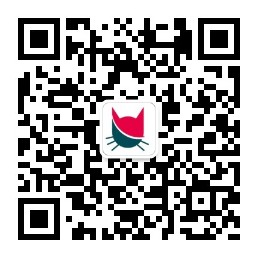热门文档
- 2022-05-26 09:53:21 杂散光抑制设计与分析_14839304
- 2022-05-26 10:19:51 《 薄膜光学与镀膜技术 》李正中
- 2023-02-20 19:38:01 工程光学 第4版-郁道银
- 2021-12-28 15:41:31 现代光学基础.钟锡华.扫描版
- 2022-05-26 15:42:36 光学设计高级讲习.160页
- 2022-05-04 23:29:15 现代光学显微镜
- 2021-08-07 15:14:37 光学仪器设计生产与装配、检校及光学冷加工新工艺新技术、质量检验标准规范实务全书
- 2022-12-04 12:49:32 现代光学镜头设计方法与实例(第2版).pdf (现代光学镜头设计方法与实例(第2版).pdf) (z-lib.org)
- 2022-04-13 00:35:13 美军标MIL-13830A 光学制图参考
- 2023-04-01 19:19:15 工程光学设计
- 2023-08-31 18:29:51 lighttools杂散光分析全部流程
- 2021-08-06 15:20:08 工业相机镜头的基础知识(课件PPT)

1、本文档共计 10 页,下载后文档不带水印,支持完整阅读内容或进行编辑。
2、当您付费下载文档后,您只拥有了使用权限,并不意味着购买了版权,文档只能用于自身使用,不得用于其他商业用途(如 [转卖]进行直接盈利或[编辑后售卖]进行间接盈利)。
3、本站所有内容均由合作方或网友上传,本站不对文档的完整性、权威性及其观点立场正确性做任何保证或承诺!文档内容仅供研究参考,付费前请自行鉴别。
4、如文档内容存在违规,或者侵犯商业秘密、侵犯著作权等,请点击“违规举报”。
2、当您付费下载文档后,您只拥有了使用权限,并不意味着购买了版权,文档只能用于自身使用,不得用于其他商业用途(如 [转卖]进行直接盈利或[编辑后售卖]进行间接盈利)。
3、本站所有内容均由合作方或网友上传,本站不对文档的完整性、权威性及其观点立场正确性做任何保证或承诺!文档内容仅供研究参考,付费前请自行鉴别。
4、如文档内容存在违规,或者侵犯商业秘密、侵犯著作权等,请点击“违规举报”。
TEXASTechnical White PaperINSTRUMENTSSLOA190B-January 2014 Revised May 2014Time-of-Flight Camera-An IntroductionLarry LiSensing Solutionsambient1.Introductionlight3D Time-of-Flight(TOF)technology is revolutionizingthe machine vision industry by providing 3D imagingpulsed sourceusing a low-cost CMOS pixel array together with anactive modulated light source.Compactconstruction,easy-of-use,together with highreflectionaccuracy and frame-rate makes TOF cameras anattractive solution for a wide range of applications.In this article,we will cover the basics of TOFoperation,and compare TOF with other 2D/3D visiontechnologies.Then various applications that benefitFigure 1:3D time-of-flight camera operation.from TOF sensing,such as gesturing and 3D scanningand printing,are explored.Finally,resources thatTo detect phase shifts between the illuminationhelp readers get started with Texas Instruments'3Dand the reflection,the light source is pulsed orTOF solution are provided.modulated by a continuous-wave (cW),source,typically a sinusoid or square wave.Squarewave modulation is more common because it2.Theory of Operationcan be easily realized using digital circuits [5].A 3D time-of-flight (TOF)camera works byillu minating the scene with a modulated light source,Pulsed modulation can be achieved byand observing the reflected light.The phase shiftintegrating photoelectrons from the reflectedbetween the illumination and the reflection islight,or by starting a fast counter at the firstmeasured and translated to distance.Figure 1detection of the reflection.The latter requiresillustrates the basic TOF concept.Typically,thea fast photo-detector,usually a single-photonillumination is from a solid-state laser or a LEDavalanche diode (SPAD).operating in the near-infrared range (~850nm)invisible to the human eyes.An imaging sensorapproach necessitates fast electronics,sincedesigned to respond to the same spectrum receivesachieving 1 millimeter accuracy requires timingthe light and converts the photonic energy toa pulse of 6.6 picoseconds in duration.This目electrical current.Note that the light entering thelevel of accuracy is nearly impossible to achievesensor has an ambient component and a reflectedin silicon at room temperature [1].component.Distance (depth)information is onlyembedded in the reflected component.Therefore,high ambient component reduces the signal to noiseratio (SNR).TEXASTechnical White PaperINSTRUMENTSSLOA190B-January 2014 Revised May 2014Integration TimeEq.4Reflection4Eq.5In all of the equations,c is the speed-of-lightconstant.At first glance,the complexity of the CW method,ascompared to the pulsed method,may seemedunjustified,but a closer look at the CW equationsReflectionreveals that the terms,(Q3-Q4)and (Q:-Q2)reduces the effect of constant offset from themeasurements.Furthermore,the quotient in thephase equation reduces the effects of constant gainsC3from the distance measurements,such as systemamplification and attenuation,or the reflectedintensity.These are desirable properties.Figure 2:Two time-of-flight methods:pulsed (top)andThe reflected amplitude (A)and offset (B)do have ancontinuous-wave (bottom).impact the depth measurement accuracy.The depthThe pulsed method is straightforward.The lightmeasurement variance can be approximated by:source illuminates for a brief period (At),and thereflected energy is sampled at every pixel,in parallel,VA+BEq.6using two out-of-phase windows,C:and C2,with thesame At.Electrical charges accumulated duringThe modulation contrast,ca,describes how well thethese samples,Q and Q2,are measured and used toTOF sensor separates and collects thecompute distance using the formula:photoelectrons.The reflected amplitude,A,is afunction of the optical power.The offset,B,is aEq.12Q1+Q2function of the ambient light and residual systemoffset.One may infer from Equation 6 that highIn contrast,the CW method takes multiple samplesamplitude,high modulation frequency and highper measurement,with each sample phase-steppedmodulation contrast will increase accuracy;whileby 90 degrees,for a total of four samples.Using thishigh offset can lead to saturation and reducetechnique,the phase angle between illuminationaccuracy.and reflection,and the distance,d,can becalculated byAt high frequency,the modulation contrast canbegin to attenuate due to the physical property ofo arctanEq.2the silicon.This puts a practical upper limit on themodulation frequency.TOF sensors with high roll-d=Eq.3off frequency generally can deliver higher accuracy.It follows that the measured pixel intensity (A)andoffset (B)can be computed by:TEXASTechnical White PaperINSTRUMENTSSLOA190B-January 2014 Revised May 2014The fact that the cw measurement is based on3.Point Cloudphase,which wraps around every2元,means theIn TOF sensors,distance is measured for every pixeldistance will also have an aliasing distance.Thein a 2D addressable array,resulting in a depth mapdistance where aliasing occurs is called theA depth map is a collection of 3D points (each pointambiguity distance,damb,and is defined as:also known as a voxel).As an example,a QVGAsensor will have a depth map of 320 x 240 voxels.Eq.72D representation of a depth map is a gray-scaleimage,as is illustrated by the soda cans example inSince the distance wraps,damb is also the maximumFigure 4-the brighter the intensity,the closer themeasurable distance.If one wishes to extend thevoxel.Figure 4 shows the depth map of a group ofmeasurable distance,one may reduce thesoda cans.modulation frequency,but at the cost of reducedaccuracy,as according to Equation 6.Instead of accepting this compromise,advanced TOFsystems deploy multi-frequency techniques toextend the distance without reducing themodulation frequency.Multi-frequency techniqueswork by adding one or more modulation frequenciesto the mix.Each modulation frequency will have aFigure 4:Depth map of soda cansdifferent ambiguity distance,but true location is theone where the different frequencies agree.Thethree-dimensional space as a collection of points,orfrequency of when the two modulations agree,point-cloud.The 3D points can be mathematicallycalled the beat frequency,is usually lower,andconnected to form a mesh onto which a texturecorresponds to a much longer ambiguity distance.surface can be mapped.If the texture is from a real-The dual-frequency concept is illustrated below.time color image of the same subject,a life-like 3Drendering of the subject will emerge,as is illustratedby the avatar in Figure 5.One may be able to rotatethe avatar to view different perspectives.Figure 3:Extending distance using a multi-frequencytechnique [6].Figure 5:Avatar formed from point-doud.




请如实的对该文档进行评分-
-
-
-
-
0 分